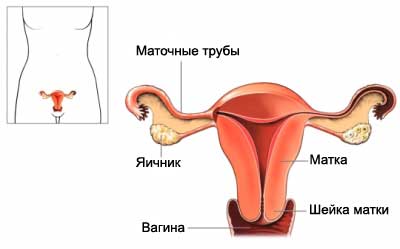Postmenopausal bleeding
Description uterine bleeding in menopause
Postmenopausal bleeding (MKM) – bleeding from the vagina, which occurs after the cessation of menses in the menopausal. Menopause begins through 12 months after the last menstrual period, usually, aged 40 to 58 years. Any bleeding from the vagina, which occurs through 12 months after the last menstrual period, MKM considered.
When MKM should always consult your doctor. Often the cause of the bleeding is not serious. But in some cases, the MCM may be the first sign of serious diseases, such as cancer of the uterus.

Causes of uterine bleeding in menopause
MCM can be caused by several factors. These include:
- Continuous hormone replacement therapy (AFE) – Daily intake of low-dose estrogen and progesterone, for the treatment of menopausal symptoms (bleeding or spotting is a common symptom in the first year of HRT);
- Vaginal atrophy, inflammation of the vagina;
- Atrophic endometriosis – inflammation of the endometrium (endometrium);
- Endometrial hyperplasia – thickening of the endometrium;
- Polyps – benign growths in the uterus or cervix;
- Infection of the uterus or cervix;
- Endometrial cancer;
- Cervical cancer;
- Fibroids in the uterus or vagina.
Risk factors for uterine bleeding in menopause
The disease or medication, which may cause MCM.
Symptoms of uterine bleeding in menopause
Most noticeable blood, exiting the vagina.
MKM is a symptom of another disease. The doctor can determine, What diseases cause bleeding, and whether they are serious. In the presence of MCM need to see a doctor.
Disorders, which may be confused with MKM:
- Hematuria – blood in the urine;
- Bleeding from the rectum.
Diagnosis of uterine bleeding in menopause
The doctor will ask about your symptoms and medical history, and perform a physical examination.
He will appoint analyzes, to find the cause of bleeding. Tests may include:
- Gynecological examination – you sit in a gynecological chair, his feet on the footrests. The doctor inserts an instrument called a speculum into the vagina. It opens the vagina, and the doctor can view it in. He will be able to find changes in the walls of the vagina, polyps or tumors;
- Screening for cervical cancer – your doctor may do cervical cancer screening (eg, mazok Papanicolaou). This will help determine, that is the source of bleeding – cervix or uterus;
- Transvaginal ultrasound – test uses sound waves, allowing you to explore the pelvic organs. It will be introduced into the vagina sensor, emitting sound waves. A doctor on the monitor can see the structure of the pelvic organs;
- Sonogisterografiya with an infusion of saline – saline (salt water) inserted into the uterus through the vagina. It fills the uterus and makes it easier to examine the lining of the uterus using a transvaginal ultrasound;
- Biopsy endometrial – the uterus is removed from the tissue sample to test for cancer;
- Hysteroscopy – hysteroscope (a long, thin tube with a camera on the end) It is injected into the uterus through the vagina and cervix. The uterus is filled with carbon dioxide or liquid. At the same time the uterus slightly inflated, facilitating medical examination of its walls. At this time, your doctor may take a sample of tissue.
Treatment of uterine bleeding in menopause
The doctor will determine the best method of treatment. The main priority – Cancer Treatment. Also, the treatment will depend on the results of analyzes and causes bleeding. For Example, If the tests show signs of uterine cancer, the doctor will refer you to an oncologist (doctor, who specializes in treating cancer).
Prevention of uterine bleeding in menopause
There are no methods to prevent uterine bleeding in menopause.
